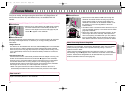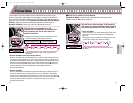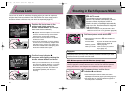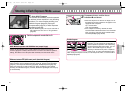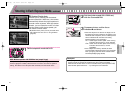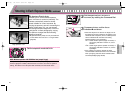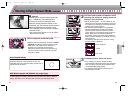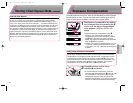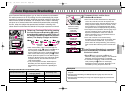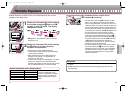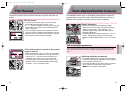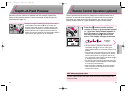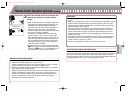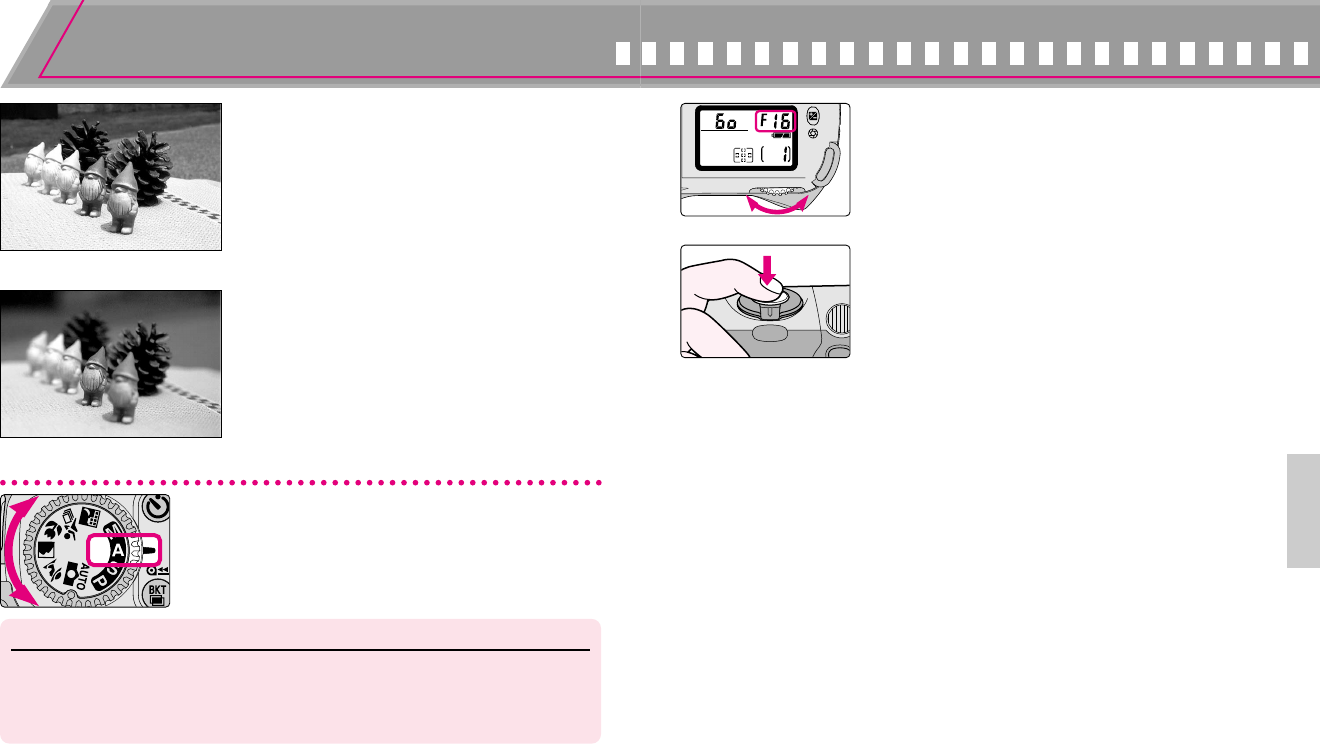
5756
DETAILED OPERATION
Shooting in Each Exposure Mode—continued
A: Aperture-Priority Auto
Enables you to set the desired aperture
(lens' minimum to maximum) manually. The
camera automatically selects a shutter
speed suitable for correct exposure. By
varying the aperture, and thus controlling the
depth of field (page 74), you can sharpen
the background and foreground, or blur the
background. In flash photography, varying
the aperture changes the flash shooting
distance (page 84).
•A (Aperture-Priority Auto) can only be used with
a CPU Nikkor lens such as D- or G-type Nikkor
(page 88).
1
Set the exposure mode dial to A.
NOTE: Minimum aperture with CPU Nikkor lens (except G-type)
Always set the aperture ring of a CPU Nikkor lens (except G-type) to its
minimum (largest f-number). When the lens is not set to its minimum aperture
setting, ƒEE blinks in the LCD panel and viewfinder, and the shutter locks.
3
Compose picture, confirm focus
indicator / and shoot.
•When the subject is too dark or too bright, one of
the following warning indications will appear in the
viewfinder and LCD panel. (Over or underexposure
value is indicated with the electronic analog
exposure display in the viewfinder.)
•HI: Select smaller aperture (larger f-number). If
the warning indication remains on, use an
ND filter.
•Lo: Select larger aperture (smaller f-number). If
the warning indication remains on, use the
Speedlight.
•If the subject is too dark or backlit, the flash
recommended indication fi blinks in the viewfinder
when you lightly press the shutter release button.
Use the Speedlight (page 80/92).
Small aperture f/22
Large aperture f/2.8
2
Set the aperture (lens' minimum to
maximum)
by rotating the Command Dial.
F65 (E) 02.12.27 5:43 PM Page 56





